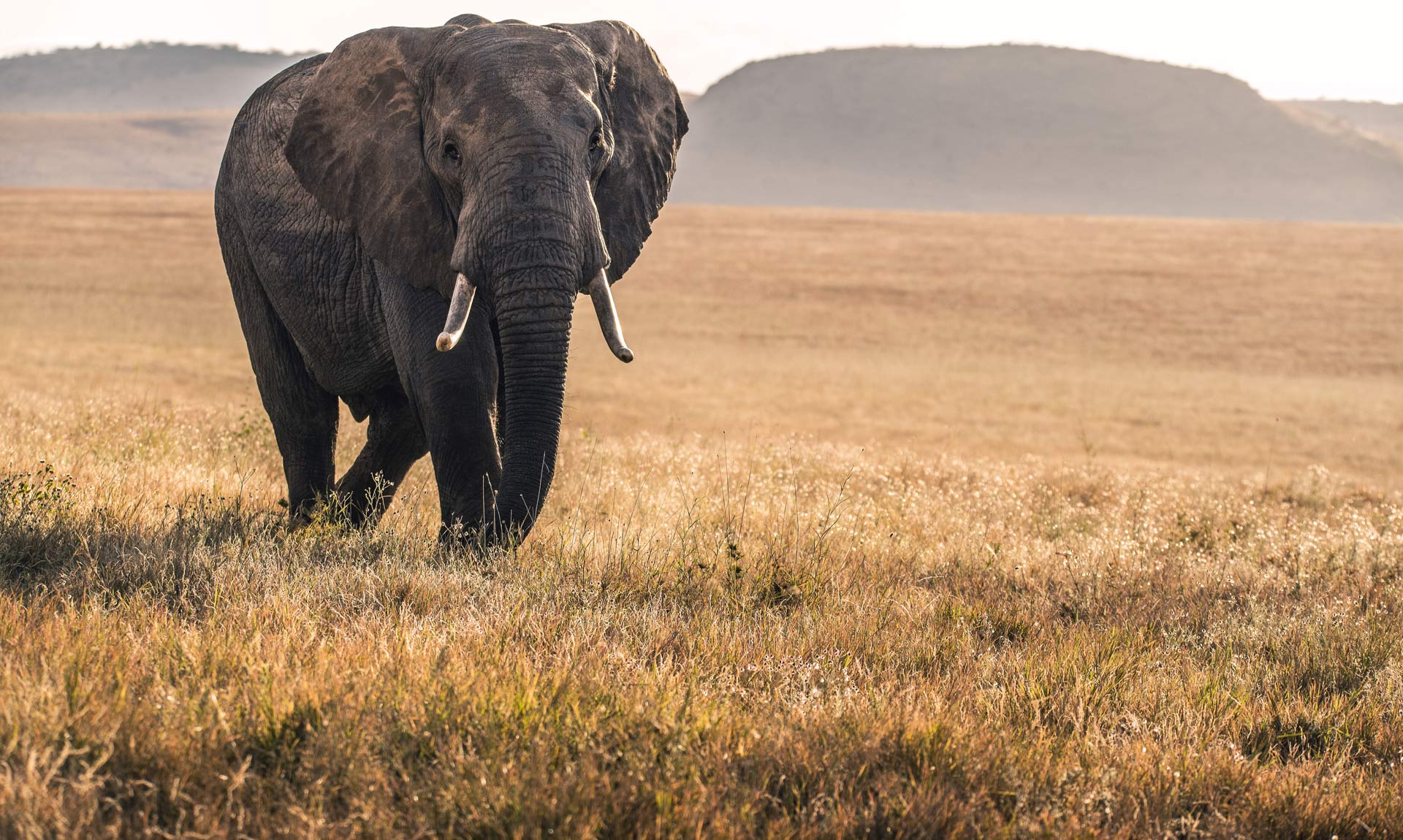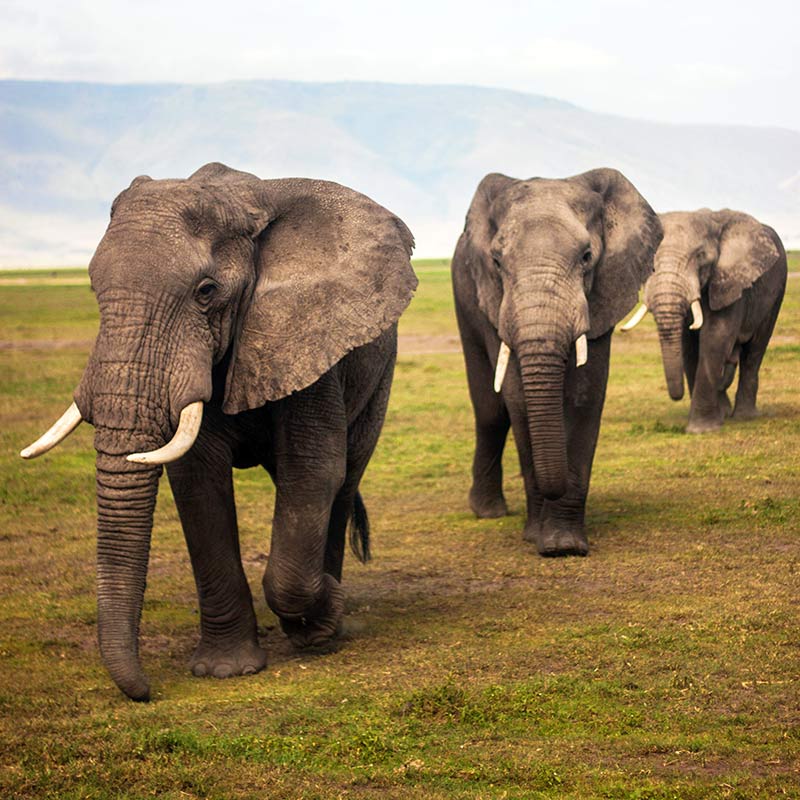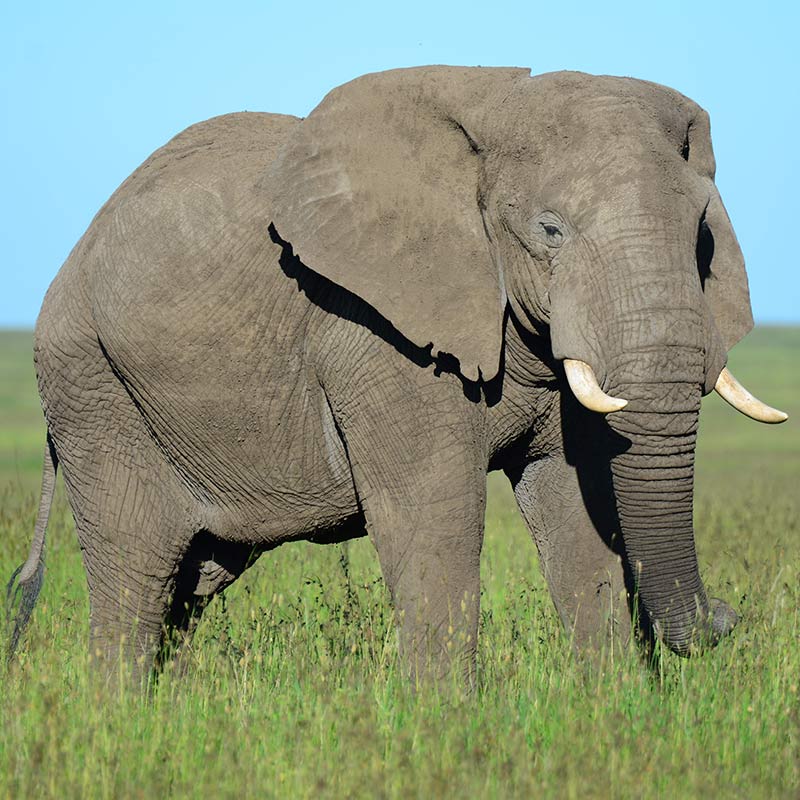AFRICAN ELEPHANTS LEFT

APPROXIMATELY 400,000 REMAIN IN THE WILD
 IN 1913 THERE WERE APPROXIMATELY 10 MILLION AFRICAN ELEPHANTS IN THE WILD
IN 1913 THERE WERE APPROXIMATELY 10 MILLION AFRICAN ELEPHANTS IN THE WILD
 STRONGHOLDS: CHOBE NATIONAL PARK, IN BOTSWANA, IS A REFUGE FOR OVER A QUARTER OF THE AFRICAN ELEPHANT POPULATION
STRONGHOLDS: CHOBE NATIONAL PARK, IN BOTSWANA, IS A REFUGE FOR OVER A QUARTER OF THE AFRICAN ELEPHANT POPULATION
 THE AFRICAN ELEPHANT IS CLASSIFIED AS VULNERABLE ON THE IUCN RED LIST
THE AFRICAN ELEPHANT IS CLASSIFIED AS VULNERABLE ON THE IUCN RED LIST
AFRICAN ELEPHANT FACTS
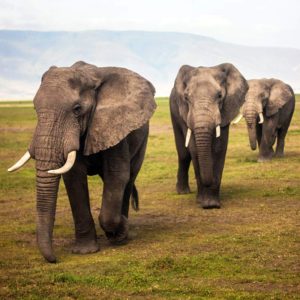 The African Elephant is one of the world’s most iconic animals, able to arouse emotional feelings in many of us. It is the largest living terrestrial animal. The African Elephant has the largest brain of any animal in the world. Its extraordinarily large skull comprises 25 percent of its total body weight. Many believe the skull’s size evolved in order to support its trunk and heavy teeth, jaws and tusks. African Elephants continue to grow throughout their lives but their rate of growth slows after they reach adulthood. The skin of the African Elephant is brownish grey with occasional tufts of stiff black hairs. Their tail is flat on the end with black, bristly hairs. To communicate over long distances, African Elephants use sounds that are outside the range of human hearing.
The African Elephant is one of the world’s most iconic animals, able to arouse emotional feelings in many of us. It is the largest living terrestrial animal. The African Elephant has the largest brain of any animal in the world. Its extraordinarily large skull comprises 25 percent of its total body weight. Many believe the skull’s size evolved in order to support its trunk and heavy teeth, jaws and tusks. African Elephants continue to grow throughout their lives but their rate of growth slows after they reach adulthood. The skin of the African Elephant is brownish grey with occasional tufts of stiff black hairs. Their tail is flat on the end with black, bristly hairs. To communicate over long distances, African Elephants use sounds that are outside the range of human hearing.
The basic African Elephant society is arranged around family units consisting of about 10 individuals. These families, led by a senior matriarch, often form alliances with other families to form herds. However, African Elephant herds can number well over 100 individuals. At puberty, male African Elephants leave the family into which they were born, to form alliances with other males.
African Elephant calves are born after an almost 2-year gestational period and remain dependent on the female for several years. The female will typically produce a calf every 3 – 4 years. Calves are often cared for by other females in the family. African Elephants have an extremely strong social bond. If threatened with danger, the family forms a protective circle around young calves, with adults facing outwards toward the intruder. African Elephants life expectancy is between 60 – 70 years.
Respect for Their Dead
African Elephants appear to have great respect for the death of family members. Some believe that they actually grieve, expressing emotion and empathy. While other species do not appear to have interest in the bodies of their dead, African Elephants show this human-like trait. They have been known to raise a foot over family-member’s bodies, in tribute. They also rock back and forth, as if mourning, and inspect and scatter their family-members’ bones.
AFRICAN ELEPHANT HABITATS
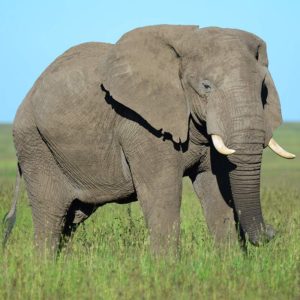 African Elephants will live in almost any habitat that provides an abundance of food and water. They are found in eastern, southern and western Africa. African Elephants live in a range of habitats including, woodlands, forest, swamps, savannas, grassy plains and sometimes deserts. They inhabit 37 African countries including, Benin, Botswana, Burkina Faso, Cameroon, DRC, Kenya, Mozambique, Namibia, Niger, Rwanda, South Africa, Tanzania, Uganda, Zambia and Zimbabwe. African Elephants can be found in protected lands such as the Serengeti and Selous Game Reserve. They can also be found in Tanzania and Pendjari National Park, in northwestern Benin. Approximately 70 percent of their range exists outside protected land.
African Elephants will live in almost any habitat that provides an abundance of food and water. They are found in eastern, southern and western Africa. African Elephants live in a range of habitats including, woodlands, forest, swamps, savannas, grassy plains and sometimes deserts. They inhabit 37 African countries including, Benin, Botswana, Burkina Faso, Cameroon, DRC, Kenya, Mozambique, Namibia, Niger, Rwanda, South Africa, Tanzania, Uganda, Zambia and Zimbabwe. African Elephants can be found in protected lands such as the Serengeti and Selous Game Reserve. They can also be found in Tanzania and Pendjari National Park, in northwestern Benin. Approximately 70 percent of their range exists outside protected land.
AFRICAN ELEPHANT THREATS
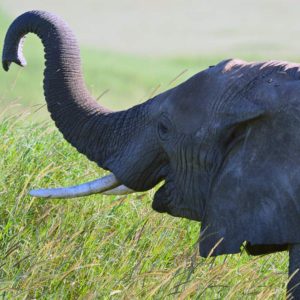 There are approximately 400,000 African Elephants remaining, but 8 percent of their population is killed by poachers each year. Approximately 100 African Elephants are killed every day. Poachers kill this iconic species for their large ivory tusks, the market for which is fueled by human consumer demand. Ivory tusks are sold and made into jewelry, crafts, musical instruments and religious objects. Over the last 10 years, the price of ivory in China has tripled. This has driven incidents of illegal poaching to an all-time high.
There are approximately 400,000 African Elephants remaining, but 8 percent of their population is killed by poachers each year. Approximately 100 African Elephants are killed every day. Poachers kill this iconic species for their large ivory tusks, the market for which is fueled by human consumer demand. Ivory tusks are sold and made into jewelry, crafts, musical instruments and religious objects. Over the last 10 years, the price of ivory in China has tripled. This has driven incidents of illegal poaching to an all-time high.
African Elephants have a nearly two-year gestational period and successful birth rates are low. As a result, they are not able to reproduce fast enough to keep up with the poaching rate. If this trend continues, the African Elephant could be extinct within our lifetime.
Human population is growing. Therefore, the conversion of land for agriculture and other development is required. As a result, the African Elephant’s habitats are becoming fragmented, making it more difficult for their species to prosper.


